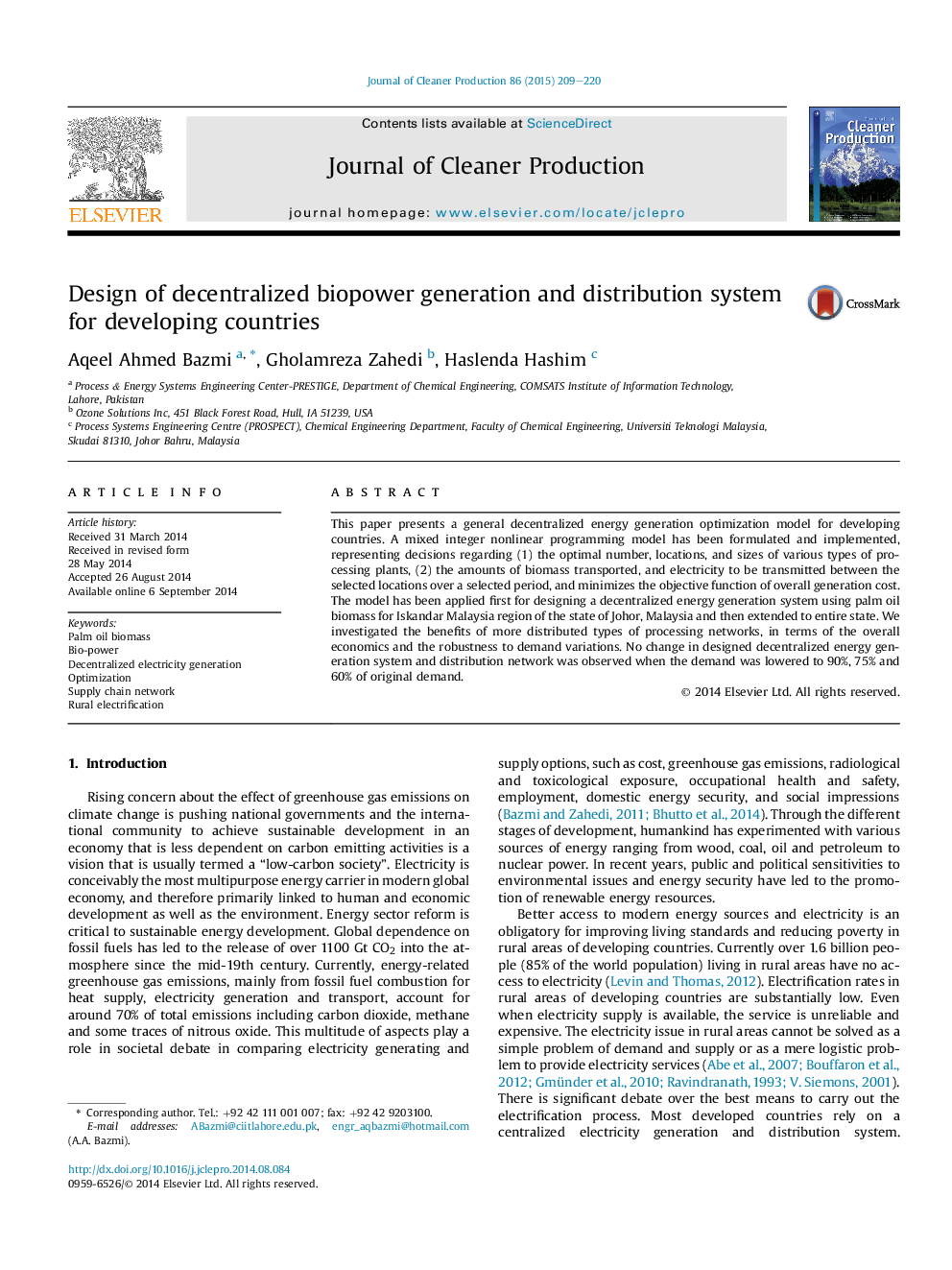| Article ID | Journal | Published Year | Pages | File Type |
|---|---|---|---|---|
| 1744718 | Journal of Cleaner Production | 2015 | 12 Pages |
•We successfully formulated and implemented decentralized biopower generation and distribution network model for electrification of rural areas.•We considered the design of the distributed generation system and compared in terms of generation cost and robustness.•The designed scenario remained unaffected by demand fluctuations.•The formulated model is capable to handle complex and larger problems.
This paper presents a general decentralized energy generation optimization model for developing countries. A mixed integer nonlinear programming model has been formulated and implemented, representing decisions regarding (1) the optimal number, locations, and sizes of various types of processing plants, (2) the amounts of biomass transported, and electricity to be transmitted between the selected locations over a selected period, and minimizes the objective function of overall generation cost. The model has been applied first for designing a decentralized energy generation system using palm oil biomass for Iskandar Malaysia region of the state of Johor, Malaysia and then extended to entire state. We investigated the benefits of more distributed types of processing networks, in terms of the overall economics and the robustness to demand variations. No change in designed decentralized energy generation system and distribution network was observed when the demand was lowered to 90%, 75% and 60% of original demand.
Graphical abstractFigure optionsDownload full-size imageDownload as PowerPoint slide
